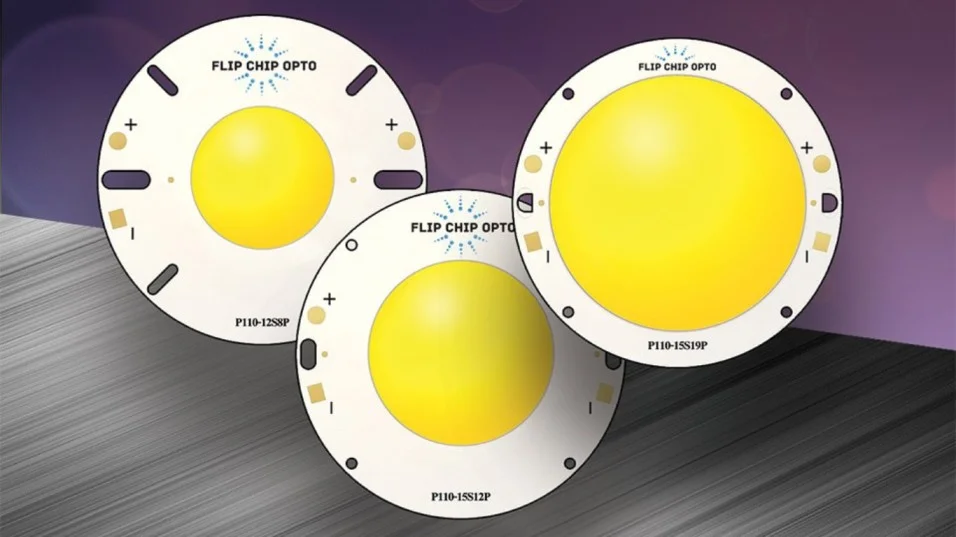In the evolving world of lighting technology, Chip Board (COB) LEDs have emerged as a groundbreaking innovation. These LEDs represent a significant leap forward, offering advantages in terms of efficiency, aesthetics, and application versatility.
The Advantages of COB LEDs
COB LEDs stand out for their high efficiency and brightness, making them ideal for applications requiring intense illumination. Their design allows for better heat dissipation, ensuring longer life spans and consistent performance. Additionally, their compact size and pleasing appearance make them a favorite in modern lighting designs.
Applications of COB LEDs
From residential lighting to industrial applications, COB LEDs are versatile. They’re particularly popular in automotive lighting, offering improved visibility and safety. In specialized fields like horticulture, they provide tailored light spectra for plant growth.
Comparing COB LEDs with Traditional LEDs
While both COB and traditional LEDs serve similar purposes, COB LEDs offer superior performance in terms of brightness and energy efficiency. Their unique design allows for a more uniform light distribution.
The Manufacturing Process of COB LEDs
The manufacturing of COB LEDs involves precise processes to ensure quality and performance. This includes rigorous testing for durability and efficiency, ensuring that each COB LED meets high standards.
The manufacturing process of Chip on Board (COB) LEDs is a sophisticated and meticulous procedure that ensures the high performance and reliability of these advanced lighting solutions. Here’s an overview of the key steps involved in the manufacturing of COB LEDs:
- Design and Prototyping: The process begins with the design phase, where engineers create blueprints for the COB LEDs based on specific requirements like size, brightness, and energy efficiency. Prototypes are then developed for testing and validation.
- Wafer Fabrication: Similar to other semiconductor devices, COB LEDs start with wafer fabrication. Thin semiconductor wafers are created using materials like silicon or gallium arsenide. These wafers serve as the base where the LED structure will be built.
- Epitaxial Growth: On the semiconductor wafer, layers of materials are grown epitaxially. These layers include active layers that will produce photons (light) when electricity is passed through them. The materials used and the thickness of the layers determine the color and efficiency of the LED.
Innovations in COB LED Technology
The COB LED sector is constantly evolving, with new advances in technology enhancing their efficiency and applicability. Future trends point towards even more energy-efficient and versatile COB LED solutions.
Environmental Impact and Sustainability
COB LEDs are not just technologically superior; they are also environmentally friendly. Their energy efficiency reduces carbon footprints, and ongoing efforts are focused on making their production and disposal more sustainable.
Choosing the Right COB LED Products
Selecting the right COB LED product involves understanding specific needs and applications. Consumers should consider factors like brightness, color temperature, and energy efficiency.
Installation and Maintenance
Proper installation is crucial for maximizing the benefits of COB LEDs. Maintenance is generally minimal, but understanding the basics can extend the life of these lighting solutions.
Challenges and Limitations of COB LEDs
Despite their advantages, COB LEDs face technical and market challenges. Understanding these limitations is essential for both consumers and manufacturers.
The Economic Impact of COB LEDs
COB LEDs offer a cost-effective lighting solution, with long-term savings outweighing initial costs. Their impact on the lighting industry has been significant, driving
innovation and competition.
Case Studies and Real-World Examples
Examining real-world applications of COB LEDs demonstrates their versatility and effectiveness. From large-scale commercial installations to small-scale residential use, the benefits are evident.
Consumer Reviews and Feedback
Consumer feedback generally praises the performance and efficiency of COB LEDs. Expert opinions also support their growing use in various sectors, citing their superior qualities compared to traditional lighting solutions.
Related post : GPT66x Impact on Language and Technology Evolution
Legal and Regulatory Considerations
As the use of COB LEDs grows, so do the legal and regulatory frameworks governing them. Compliance with international standards and regulations is crucial for manufacturers and consumers.
Conclusion and Future Outlook
COB LED technology is not just a current trend; it’s a glimpse into the future of lighting. With ongoing advancements, COB LEDs are set to redefine illumination in even more innovative ways.
FAQs
- What makes COB LEDs different from traditional LEDs?
- COB LEDs are more compact and efficient, offering a more uniform light output with better heat dissipation.
- Are COB LEDs environmentally friendly?
- Yes, their energy efficiency and longer lifespan make them a more sustainable choice compared to traditional lighting solutions.
- Can COB LEDs be used in any lighting application?
- COB LEDs are versatile and can be used in a wide range of applications, from residential to industrial settings.
- How do COB LEDs impact energy consumption?
- Their high efficiency significantly reduces energy consumption, leading to lower electricity bills and reduced carbon footprint.
- What should I consider when buying COB LEDs?
- Consider factors like brightness, color temperature, energy efficiency, and the specific application you need them for.

